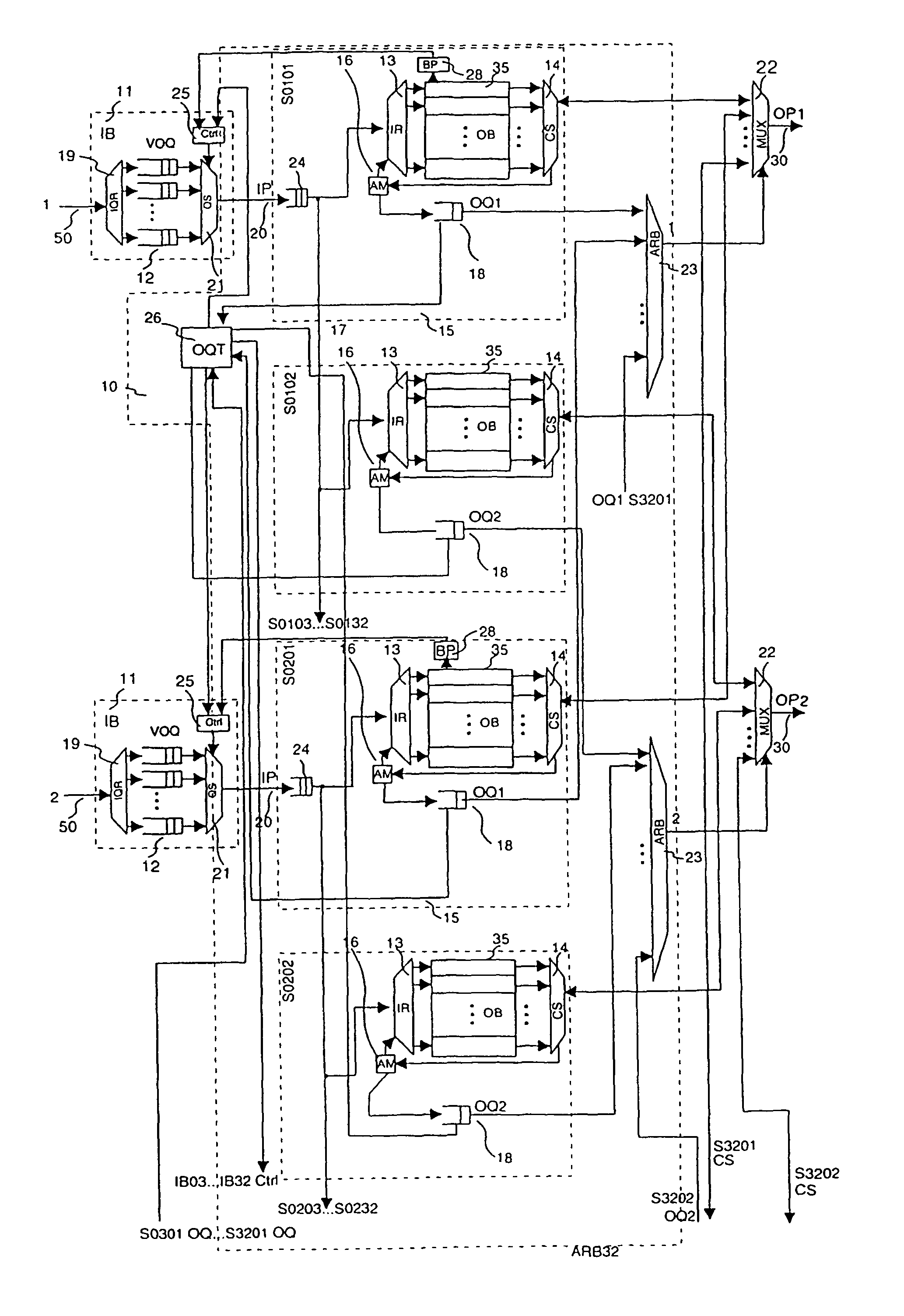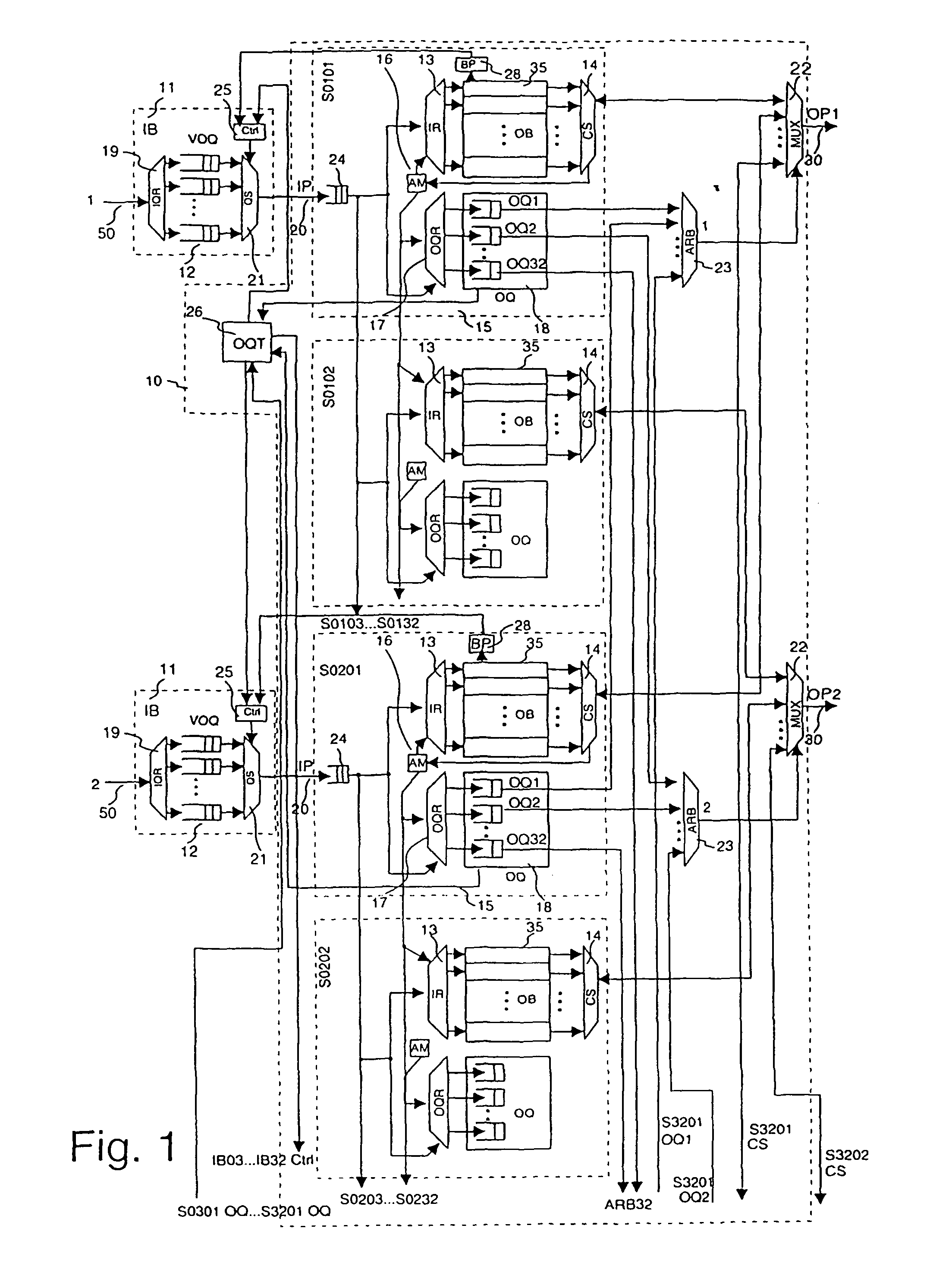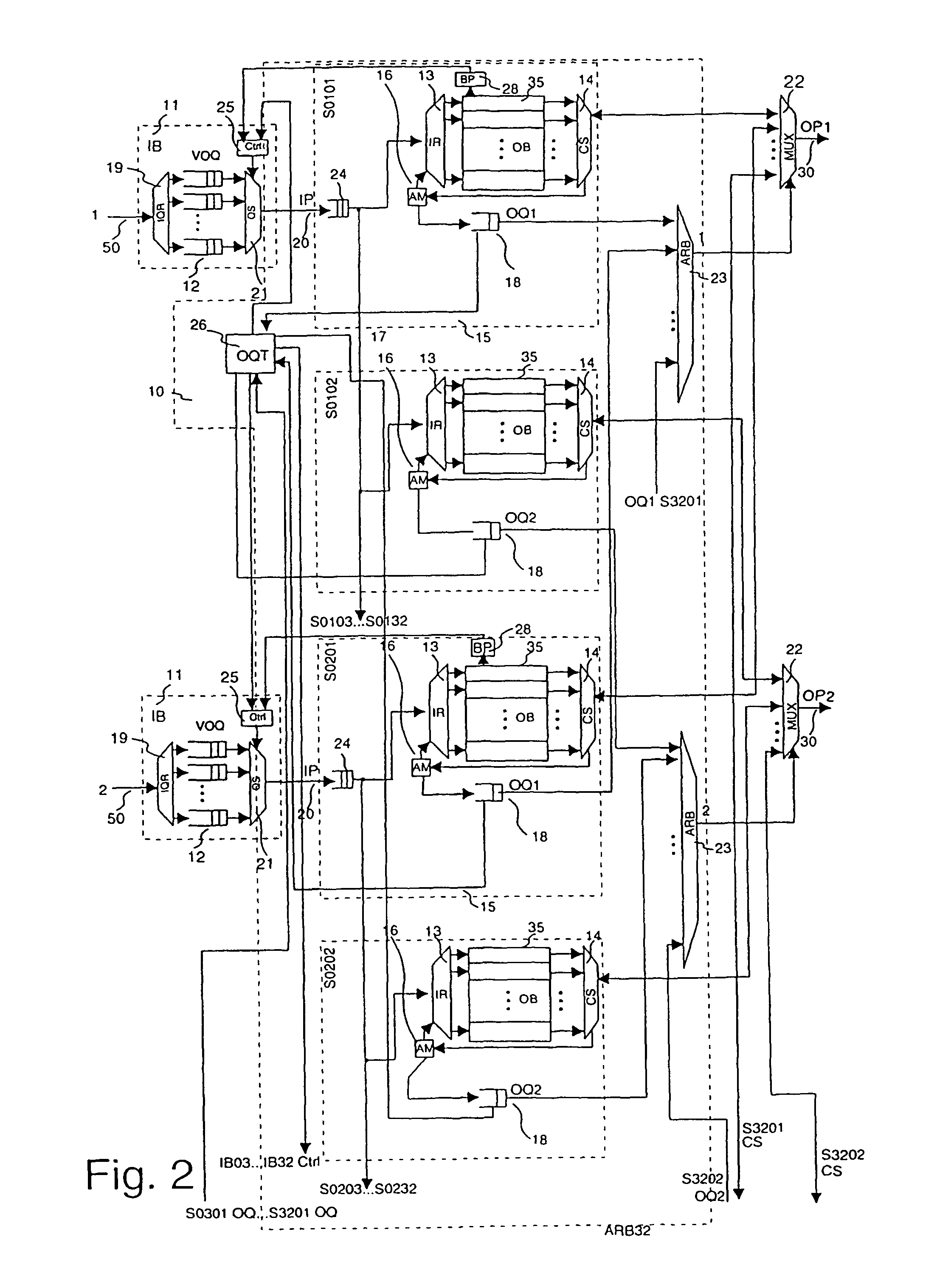Switching arrangement and method with separated output buffers
a technology of output buffers and switching arrangements, applied in data switching networks, store-and-forward switching systems, time-division multiplexing selection, etc., can solve the problems of increased delays or even information loss, packet switches that rely solely on output queuing, and are not well scalable to high data rates. , the effect of facilitating circuit design
- Summary
- Abstract
- Description
- Claims
- Application Information
AI Technical Summary
Benefits of technology
Problems solved by technology
Method used
Image
Examples
second embodiment
[0081]In FIG. 2, a second embodiment is depicted. It differs from the embodiment in FIG. 1 in the following respects.
[0082]Each switching section here has its own set of output queues 18 together with a corresponding output queue router 17 and an address manager 16. Thereby each output buffer 35 is independently manageable in its address space. The address management works thereby as explained above, but each copy of the data packet that is being stored in one of the output buffers 35 of the same input port 20, receives its own address. This has the advantage that for cases of inhomogeneous destination distribution a better throughput and output buffer usage can be achieved. A typical example of such an inhomogeneity would be a burst, i.e. a series of data packets with the same destination. In the case of such a burst, the situation could occur that the first output buffer 35 assigned to the first output port 30 is occupied exclusively by data packets that head for this first output...
third embodiment
[0085]In FIG. 4 another embodiment of the invention is depicted. Herein a pairing of inputs and outputs has been utilized. The first input port 20, labelled with a “1”, and the second input port 20, labelled with a “2” are both assigned to a common switching section. This means that the input routers 13 and the output queue router 17 of that switching section receive input from both these input ports 20. The input routers 13 therefore are designed as repowering trees with two inputs. The corresponding address manager 16 handles two addresses at each point in time, one for each input port 20. At the output side of the switching section, the cell selectors 14 are designed to deliver their output to each of the multiplexers of the first output port OP1 and the second output port OP2. The second output buffer 35 of that switching section is hence via its cell selector 14 connected to the third output port OP3 and the fourth output port OP4. The rest of the output buffers 35 of that swit...
PUM
 Login to View More
Login to View More Abstract
Description
Claims
Application Information
 Login to View More
Login to View More - R&D
- Intellectual Property
- Life Sciences
- Materials
- Tech Scout
- Unparalleled Data Quality
- Higher Quality Content
- 60% Fewer Hallucinations
Browse by: Latest US Patents, China's latest patents, Technical Efficacy Thesaurus, Application Domain, Technology Topic, Popular Technical Reports.
© 2025 PatSnap. All rights reserved.Legal|Privacy policy|Modern Slavery Act Transparency Statement|Sitemap|About US| Contact US: help@patsnap.com



